The 10 Best Museums in Spain’s Top Cities

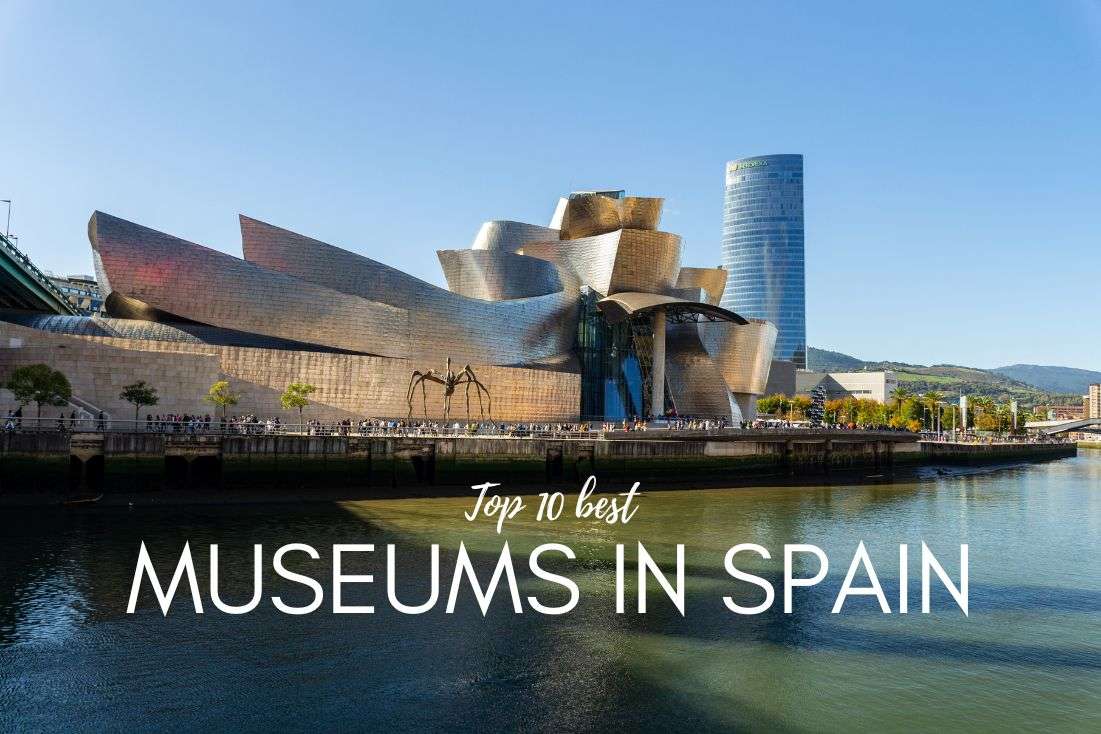
Choosing a “top 10” of anything in a country that has a lot more than 10 of it is a great way to shoot yourself in the foot and get heated comments from upset blog readers. But, as we did with Spain’s beaches and restaurants, we shall attempt to tackle our favorite museums, too! Bring on the opinions!
With over 1500 museums, this list is a mere scratch on the surface of Spain’s museums. You can probably guess that many of the country’s most famous museums are in the biggest cities, and are mostly fine arts museums. No offense, but yawn. But putting together a list of just art museums sounds boring to me and, frankly, the internet if full of these standard top 10 lists. You don’t need another one from us.
I’ve decided to choose a single top museum in each city I’ve been to in Spain, based on my personal opinion and experience, with the aim to provide a diverse list that isn’t all just fine art. I’ve also taken into consideration the relevance of each museum to the city or region they are in. A tile museum in Andalusia for example. Perfect match, right?
Ready, set, museums!
You might also be interested in reading:
- Andalusia Itinerary: Southern Spain in 10 Days
- Barcelona Itinerary: 5 days in Gaudí’s Metropole (with day trips)
- All You Need to Know about Spanish Tapas (+Restaurant Tips)
- The 16 Most Beautiful Beaches in Spain
1. The Guggenheim Museum in Bilbao
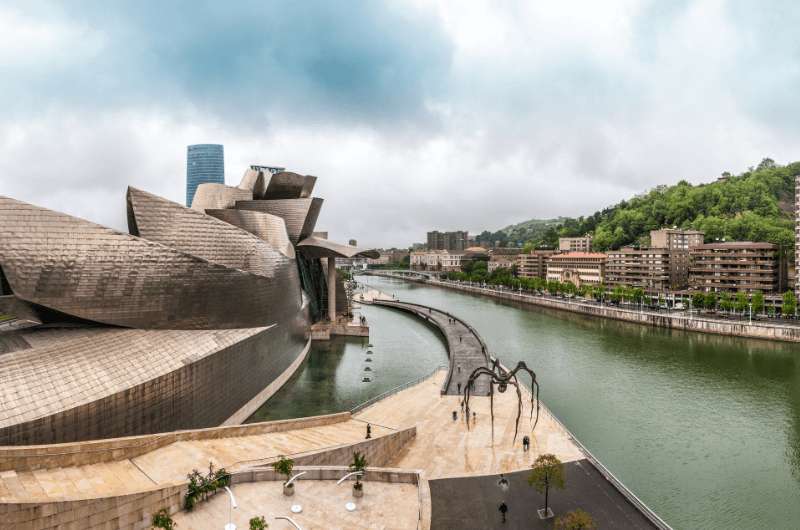
The Guggenheim Museum with cutie pie Maman representing motherhood
The Guggenheim Museum could just be standing there, empty, or housing a restaurant or a shoe store or something, and it would still be just as famous. It’s a masterpiece. You don’t have to love it, but you will take your hat off to the genius of it.
The fantastic titanium and glass building is right by the river. The exterior’s shape is up to interpretation. It can look like anything from a ship to a shoe with a mouth, depending on your imagination and where you are standing while looking at it.
It has become Frank Gehry’s most remarkable work and is considered one of the most important buildings of the 20th century. And one of the most famous museums in Spain.
Built in 1997, the building had an instantly transformative impact on Bilbao. The city was once an industrial hub with a huge port—not much of a tourist magnet. Then bam! The Guggenheim changed all that. I mean the port is still just as important, though it isn’t in the city anymore, but people come to Bilbao solely for the purpose of visiting the museum. Now that’s impressive!
If I were Frank Gehry I’d just put a lawn chair out by the museum and hang out, basking in the oohs and aws of visitors.
The Guggenheim houses modern and contemporary art, with some of its best pieces outside, free for everyone that walks by to see. I like that about it.
There’s a 12.5 meter (40 foot) tall dog statue covered in thousands of flowers, simply called “Puppy” by Jeff Koons. He’s cute and he’s currently looking for funding. I can imagine he is a handful to take care of.
Then we have “Maman”, a large and pretty terrifying spider, created by Louise Bourgeois. Intended as a symbol of maternity, this spidey is a tribute to the artist’s mother, showing both strength and fragility.
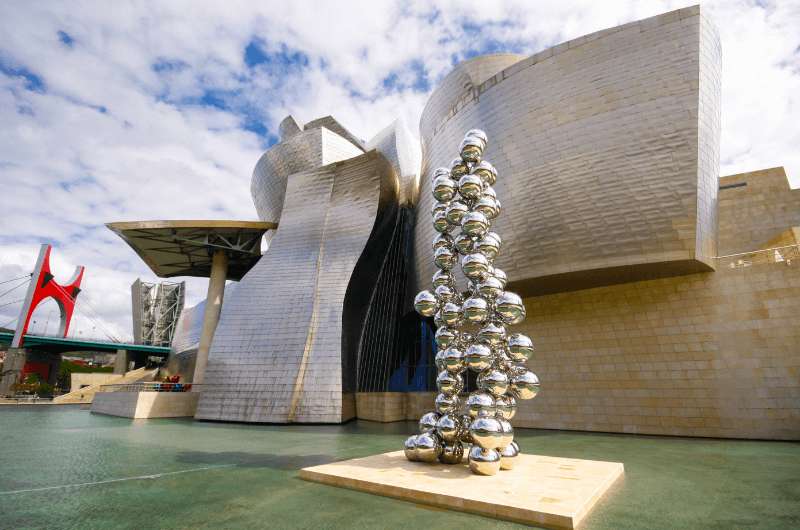
Tall Tree and the Eye
You’ll also see Anish Kapoor’s “Tall Tree and the Eye”, a tall sculpture made of stainless-steel balls. Something about objecthood and examining mathematical and structural principles.
And then there is Fujiko Nakaya’s “The Fog Sculpture”, which is the fog that will be dancing around on the pool between the museum and the river, and usually also swallowing up some of the visitors walking on the surrounding pathways. I wonder: If it swallows you, are you art, too?
Inside the Guggenheim, the space is built around an atrium in the middle that is connected to the three floors by curved walkways and glass elevators.
The art inside is on par with some of the best art galleries in all of Europe. Robert Motherwell, Yves Klein, Andy Warhol, Chillada, Richard Serra, and others. It’s modern art, so it will have lovers and haters. Art is in the eye of the beholder, after all.
For me, this was the best art museum in Spain.
A visit to the Guggenheim will take you anywhere from two to four hours. Only you know how much of an art fan you are. If all else fails and whoever you are there with is taking too long, there is a decent café on site that you can kill some time at.
- Guggenheim Museum, Abandoibarra Etorbidea 2, Bilbao
- Open Tuesday to Sunday 11 am–7 pm. Mondays are closed unless you are visiting in July and August.
- Tickets cost €13
2. Prado Museum in Madrid
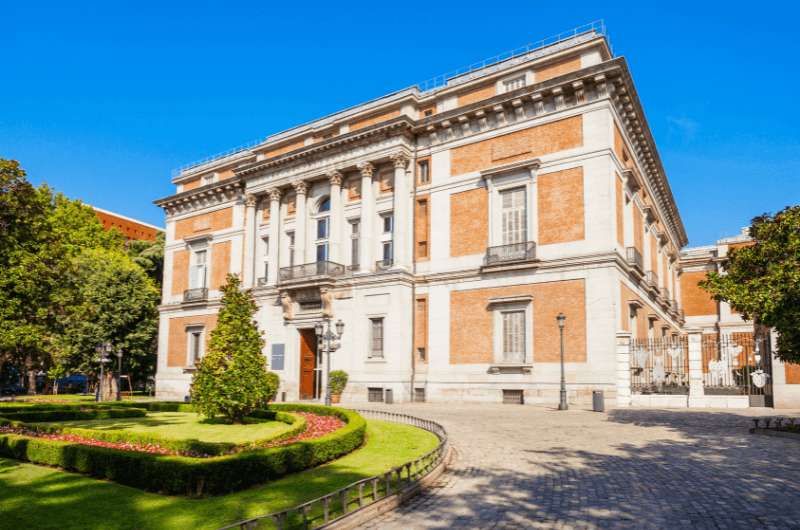
One wing of the massive Prado Museum
I’m going to be honest with you, I haven’t been to this one. But objectively, the Prado is the top museum in Madrid, so it’s going on my list. Even the name is awesome: PRRRADO! You just want to stomp your foot and throw your hand in the air, flamenco-style.
It was opened in 1819 as the Royal Museum of Paintings and Sculptures and has been expanded since then. Now, it is massive. Like you’ll need a map, otherwise you could get lost. The brochure you get at the entrance has three routes to choose from based on how long you want to wander through the many rooms: 1 hour, 2 hours, and 3 hours. It will point you in the direction of the most masterful of the masterpieces that the Prado houses.
Hotel tips: Some fantastic hotels in the city center, not far from the Prado, are Catalonia Las Cortes or the Amor de Dios 17 Boutique Hotel.
There are English descriptions at each piece that give you the basic info of what you are looking at. I’d say skip the guide unless you really want all the details. What is there is enough for the average museum goer.
The Prado displays the art of many artists, namely the greats like Francisco Goya, Diego Velázquez, and Peter Paul Rubens. There are over 120 galleries for you to walk through, so it is recommended to come back on more than one occasion to prevent museum fatigue. Only the biggest art fans will have that kind of luxury, but I just wanted to put it out there that this place is large.
There is a café on site if you need a break.
Tickets can be bought online or on the spot. If you buy a ticket online, you will be able to skip the line at the ticket counter (unless you get a discounted online ticket).
Alternatively, the Prado has an extensive virtual tour available, so you can check it out from the comfort of your own couch, too.
- Museo del Prado,
- Open Monday to Saturday 10 am–8 pm, Sundays and holidays 10 am–7 pm
- Tickets cost €15. Free during the last two hours of every day
3. The Joan Miró Foundation in Barcelona
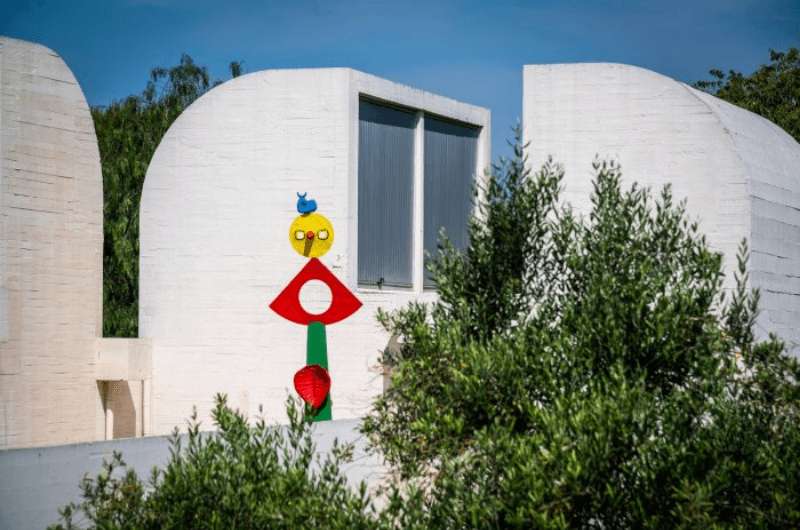
© Fundació Joan Miró, Barcelona
This white building stands on Montjuïc Hill in Barcelona, surrounded by a garden and staring out over the city.
Joan Miró was a painter, sculptor and ceramicist. He was born in Barcelona and his parents were not excited about him being an artist. He enrolled in business school to make them happy, had a nervous breakdown, and then continued with his art, to the dismay of his parents.
You can imagine how important it was to prove himself in the art world. So when he finally had his first exhibition at 25 years old, it was a big deal. Alas, his work was ridiculed. Miró was unhappy, his parents were unhappy, but he didn’t give up. He moved to Paris and became besties with Picasso instead.
Fascinated with the subconscious and dreams, Miró’s work is hard to classify even for those that are in the know. He is most often categorized as a surrealist, but with a twist. How cool is he for not fitting into a single box?
Eventually, Miró moved to Barcelona again, and then on to Mallorca, which he considered his true home.
The idea of building the Miró Foundation was Miró’s, which I see as an act of great success and self-awareness. Ridiculed no more, Barcelona is now home to one of the two Miró Foundation museums, the other being in Palma de Mallorca. Building yourself what has become one of the best museums in Barcelona deserves respect.
Inside (and outside), you will find many of Miró’s works. There are thousands of them, so they are on rotation. You can also see the art of Peter Greenaway, Chillida, René Magritte, Rothko, and others.
Oh, and a poisonous fountain, too! Alexander Calder’s “Mercury Fountain” has to be kept behind glass, since liquid mercury is toxic to humans. There is an interesting story behind it and is supposed to be a reminder of Spain’s troubled past and the brutalities of war.
Along with Miró’s original idea of making the Foundation a place for young people to experiment with art, the museum also has a room dedicated to promoting young artists’ work. I bet he would’ve loved having a space like that when he was starting out.
- Joan Miró Foundation, Parc de Montjuïc (not far from the cable car station), Barcelona
- Open Thursday to Sunday 10 am–6 pm. Closed Monday to Wednesday.
- Tickets cost €13
4. Viana Palace in Cordoba
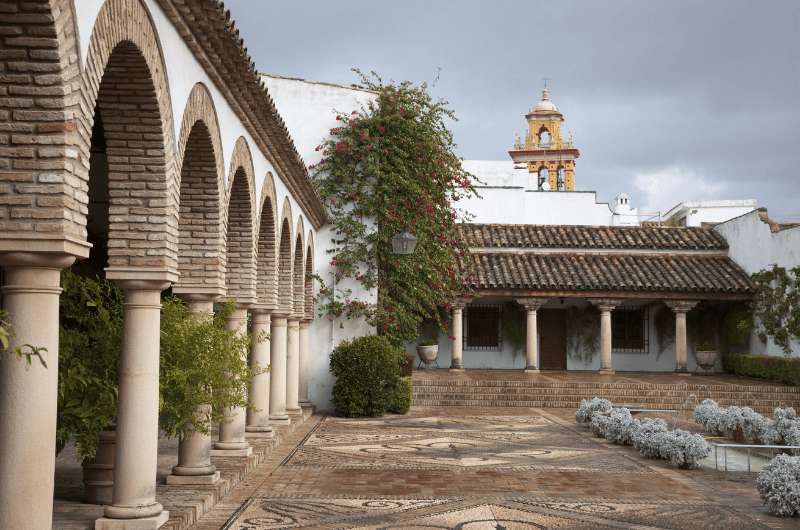
One of the courtyards of the Viana Palace
Cordoba is known for its Mosque-Cathedral, the Mesquita, and also for its patios, or courtyards. The annual Festival of Patios takes place in May and has been recognized by UNESCO as cultural heritage.
If you don’t visit Cordoba in May, there is a wonderful year-round alternative that allows you to explore some gorgeous courtyards—the Palacio de Viana. A museum of courtyards, it’s perfect if you want to learn more about Spanish patios and see the different styles that have been popular throughout history.
The Renaissance Viana Palace has no less than 12 courtyards, all connected in a circular pattern. Each one is unique—there is the courtyard of oranges, the courtyard of Roman columns, the silent courtyard or a courtyard of the cats! There are examples of medieval patios, renaissance patios and local-style patios. Get a map at the ticket office, it’s really informative.
It took 500 years to build the palace complex, so you can see the diversity and layers that kept being added on through time. It was inhabited by royal families until the late 20th century.
Hotel tip: For your very own patio, stay at the wonderfully Spanish Hotel Boutique Patio del Posadero. The breakfast is incredible, and they have a pool!
The palace itself is a museum showing how the nobles of Cordoba lived. You’ll step back in time and see the evolution of architectural and design styles. Everything from furniture, tapestries, tiles, porcelain, muskets and other artifacts are set out just as they would have been in the olden days.
- Palacio de Viana, Plaza de Don Gome 2, Cordoba
- Closed on Mondays. July and August: Tuesday to Sunday 9am—3pm. Other months: Tuesday to Saturday 10am—7pm. Sunday 10am—3pm.
- Tickets are €6 for just the patios, €10 for patios and palace
5. Museum of the Fallas Artists in Valencia
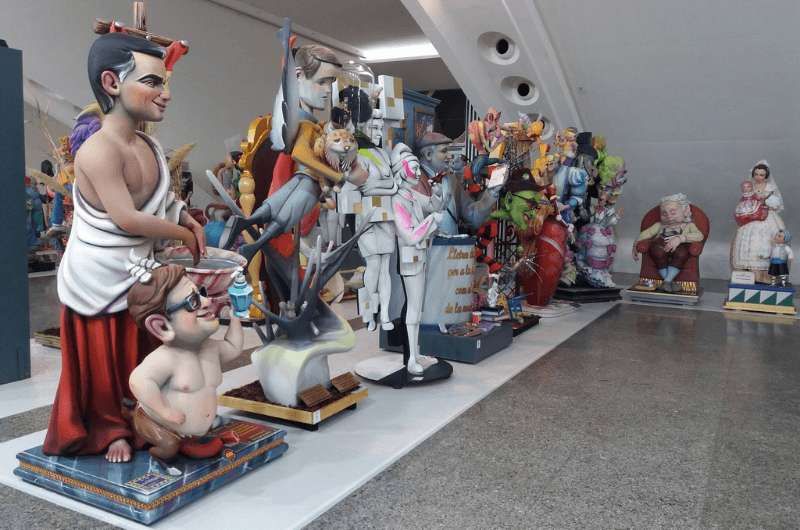
These guys were all saved from the flames of the finale of the Las Fallas Festival in Valencia
In my article about traveling to Valencia I asserted that you have to visit Valencia in March during the Las Fallas Festival (it’s not the most exciting city in Spain, so I personally wouldn’t visit outside of the festival).
I stand by that, but if you can’t time your trip right, at the very least visit this fallas museum to get a taste of what the festival is all about. Ideally in the month or two before the festival so you get to see the statue creation process.
Our top tips for museums in Spain:
- Best art museum: Guggenheim Museum in Bilbao
- Best outdoor experience: Palacio de Viana in Cordoba
- Best view of the city: Joan Miró Foundation in Barcelona
- Best for buying souvenirs: Centro Cerámico Triana in Sevilla
Fallas are colorful statues made out of cardboard and papier-mâché that look like cartoon characters. They symbolize anything from politics to recent events or caricatures of popular public figures.
Las Fallas comes from an old carpenter’s tradition. They would celebrate the arrival of spring by burning wood used to hold their lights during the winter. Eventually, cloth and other leftovers were added to the fires, then they were shaped into human-like figures.
Nowadays, during March 15-17 every year, each community in the wider Valencia center builds their own falla and hopes to win the title and have their creation saved from the fire that inevitably all fallas end up in on the last night of the festival. It’s quite the spectacle! Read up on the events of the Las Fallas festival here.
There are two fallas museums in Valencia, both of which are good. But it is worth going to the Museum of the Gremio Artesano de Artistas Falleros even though it is a little outside of the city center.
Tip: Book one of the top hotels in Valencia here. We’ve already filtered them for you based on rating.
The best part is the location of the museum, which is something like “Fallas City”. It’s within the halls where the craftsmen work to put their fallas together, so if you visit in February or the first half of March, you can actually see them work on their masterpieces.
Inside this Valencia museum, you’ll be able to see not only individual ninots (the characters that make up each statue), but also full fallas. They display the ones that are saved from the fire each year by the artist’s guild.
There are also sketches, models and photographs that give you a better idea of how fallas are made. You’ll also be able to watch a 10-minute documentary about the Las Fallas Festival.
- Museum of the Gremio Artesano de Artistas Falleros, Av. de Sant Josep Artesà 17, Valencia
- Closed Sundays. Monday to Friday 10 am–2 pm and 4 pm–7 pm. Saturday 10 am–2 pm. Closed all of August.
- Tickets are €4
6. Ceramics Center in Sevilla
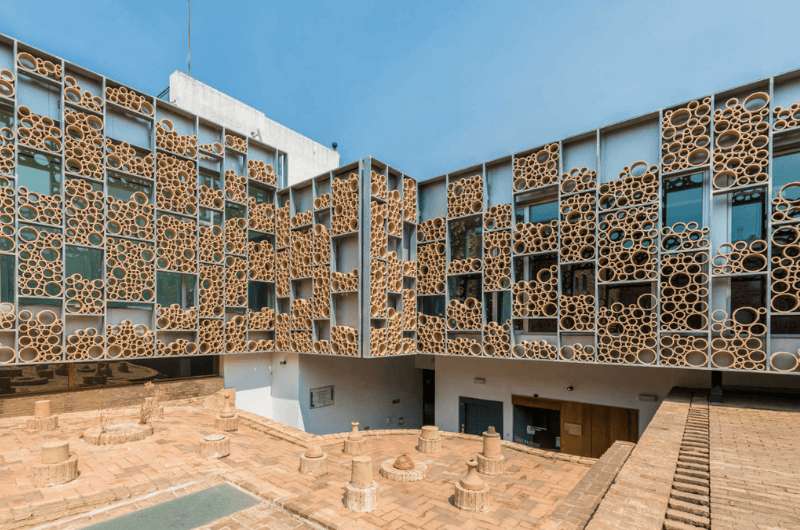
The courtyard of the Ceramics Center
I’m going to not put the Museum of Fine Arts here, even though it is one of the most prestigious in Spain, second to just the Prado in Madrid. Not saying anything bad about it, I’m sure it deserves its place in the limelight.
But being in Andalusia—aka tile central—I thought it would be fitting to tell you about a ceramics museum. I mean if you are on a trip through Andalusia, you would have to have your head stuck in a bucket the whole time to not notice the vast array of ceramic tiles all over the place - courtesy of the Moors.
Centro Cerámico Triana, a smallish museum in the less touristy part of Sevilla, is a great place to learn about the history of the ceramics industry in Sevilla. It doesn’t hurt that the Triana neighborhood is a vibrant, artsy place with many shops and restaurants and a lively flamenco culture. It is located across the river form the Old Town.
The museum itself is in a former ceramics factory, since Triana is the part of Sevilla that traditionally produced the most tiles and ceramics. If you see tiles around the city, like in restaurants, bars, churches and on private homes, they were probably produced in Triana. Even the tiles on the fabulous Plaza de España are from here!
Tip: Book a fantastic hotel in Sevilla, like the Áurea Catedral or the Áurea Washington.
The inner courtyard used to be the main production area of the factory and has been restored to a very cool area in itself. Various sizes of pottery tubes are used to make the masterpiece of a façade. It is meant to help provide shade inside the museum and still allow light to get in.
Inside the museum, you’ll see the kilns, a water well, mineral mills and potters’ wheels, all with display panels that help you understand the ins and outs of pottery making.
The upper floors are where some impressive tiled pieces are displayed. There are also subtitled videos with ex-factory workers telling their stories.
The Sevilla museum isn’t very big and you won’t spend more than an hour there. You can extend your tile tour in the streets surrounding the museum where there are many ceramics shops. You’ll want to get your entire family tiles as souvenirs, I promise.
- Centro Cerámico Triana, Calle Callao 16, Sevilla
- Open Tuesday to Saturday 11 am–6 pm. Sundays 10 am–3 pm. Closed on Mondays.
- Tickets cost €2.10
7. Bullring and Museum in Ronda
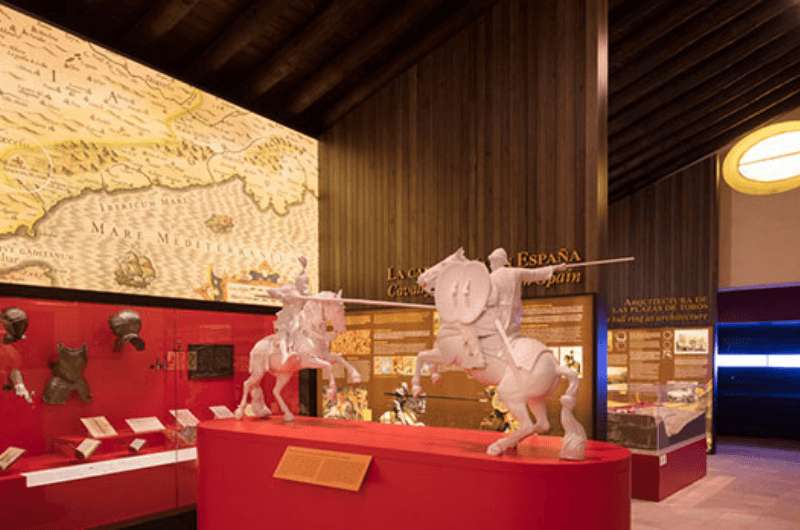
One of the rooms of the Bullfighting Museum in Ronda
Bullfighting or otherwise handling bulls had been a tradition in Spain since the Middle Ages. It was the Romero family in Ronda that started the tradition of fighting bulls on foot instead of on horses. Ernest Hemingway, a frequent visitor of Ronda, even named one of his characters in his novel ‘The Sun Also Rises’ Pedro Romero.
The next big bullfighting dynasty, the Ordóñez family, elevated the tradition even more. Antonio Ordóñez, the most famous of the family, gave life to the Goyesca bullfight in 1954. The term comes from the name of painter Francisco de la Goya who often painted bullfights in a way that they looked so glamorous and extra, always remembering to include fancy costumes, beautiful women etc.
Nowadays, there is an annual ‘Feria Goyesca de Pedro Romero’ which takes place in Ronda the first week in September. There is a procession of horse-drawn carriages with everyone, including the matadors, dressed in 18th century costumes.
Hotel tip: If you stay at the Catalonia Ronda, you can have direct views of the bullring and the fabulous sunsets!
The bullring in Ronda is one of the oldest in the world, dating from the 18th century. It is one of the most emblematic bullrings in the world. Its riding school here is one of Europe's most prestigious.
You can take a tour of the bullfighting ring to find out more about bullfighting in Spain. This was actually quite interesting and we can recommend it.
The museum, which is part of the bullring tour, is top notch. The Royal Harness Collection is fascinating, who knew saddles could be so fancy! There are historical ceremonial harnesses as well as Queen Isabella II’s saddle and some over-the-top Turkish-style saddles, too.
The Real Maestranza de Ronda was founded over 450 years ago as a horseman brotherhood that defended the city. It has since evolved into one of the best riding schools in all of Europe. You can learn about the school’s history in this part of the museum and even visit the equestrian gallery. If you’re lucky, you will be able to witness the practice of the students of the riding school.
- Ronda Bullring and Museum, C. Virgen de la Paz 15, Ronda
- Open daily 10 am–6 pm in the winter months, until 8 pm in the summer.
- Tickets cost €8
8. The Automobile and Fashion Museum in Malaga
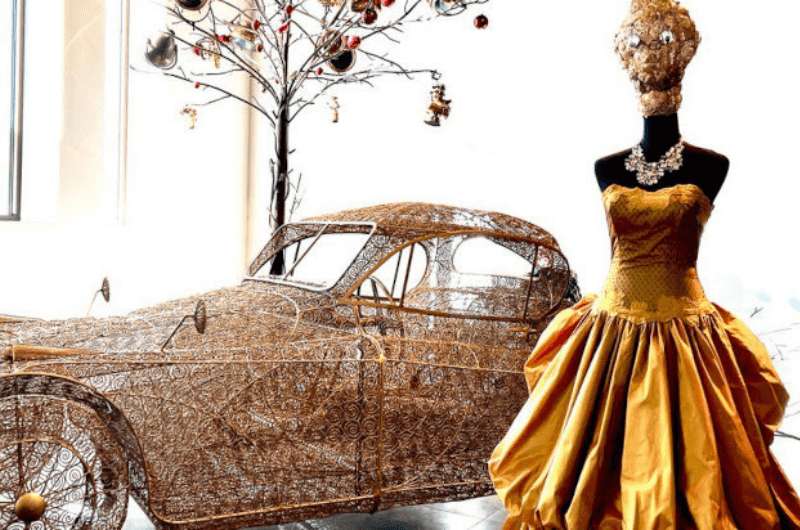
Most of the cars are real cars, but there are some artsy ones, too
This might seem random, but Museo Automovilístico is fun and original, and I always appreciate a good idea. It’s also well presented in a former cigarette factory, with 13 large, themed rooms. A must-see Malaga museum in my book.
This isn’t just a car museum, it gives visitors another level of enjoyment by adding haute couture and art into the installations. You get a great snapshot of the time period that is being portrayed, with great information panels (also in English) that tell the parallel stories of auto and fashion.
The museum displays about 100 automobiles such as Jaguar, Aston Martin, Ferrari and Porsche in great condition, sometimes with funky paintjobs. More than 300 Dior, Chanel, Yves Saint Laurent and other pieces add to the portrayal of luxury. There are paintings and things like engines and various different car parts used as art on the walls next to the cars.
This is a car museum that will be enjoyed even by those that aren’t car fans. The whole family (including pets—the museum is pet-friendly and there were dogs there) will enjoy this Malaga museum.
You’ll need an hour or two to wander through it. It is located outside of the city center, so you will need to take a taxi. It’s a couple of kilometers to the south along the coast, so nothing too complicated.
- Museo Automovilistico, Edificio de La Tabacalera, en Avenida Sor Teresa Prat 15, Malaga
- Open Monday to Saturday 10 am–2:30 pm and 4 pm–7 pm. Closed on Sundays.
- Tickets cost €9.50
9. Origami Museum in Zaragoza
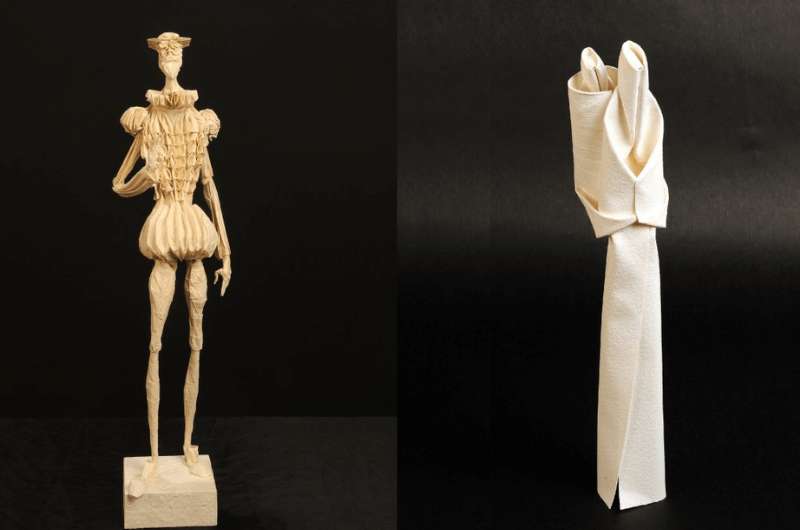
I can barely make a paper airplane and these guys make this
It might seem very random to have an origami museum in the middle of Spain, but it’s because of a paperfolding group that has existed in Zaragoza since 1944. Thanks to the members’ relationship with international folders, they are able to get some impressive pieces for the exhibitions from all over the world.
I remember as a kid, getting a paper airplane to really fly required making some extra folds that my little fingers were very proud of. But this museum’s origami collection took my idea of folding paper to a whole new level. Impressive, really.
These aren’t just cooler versions of swans and boats, these are masterpieces. It’s the first museum of its kind in Europe and one of the best in the world outside of Japan. EMOZ shows original models of the most important folders in the world, like Akira Yoshizawa, Yoshihide Momotani, Eric Joisel, and Vicent Floderer.
In the main space there is a temporary exhibition showcasing one featured artist, with a permanent exhibition in the other rooms.
This Zaragoza museum is not a big place, so you will be done within an hour. It’s on the top floor of a historical building that houses the Historical Center.
- EMOZ, Centro Histórico, Plaza San Agustín 2, Zaragoza
- Closed Mondays. Tuesday to Saturday 10 am–2 pm, 5 pm–9 pm. Sundays 10 am–2 pm.
- Tickets cost €3
10. Science Park in Granada
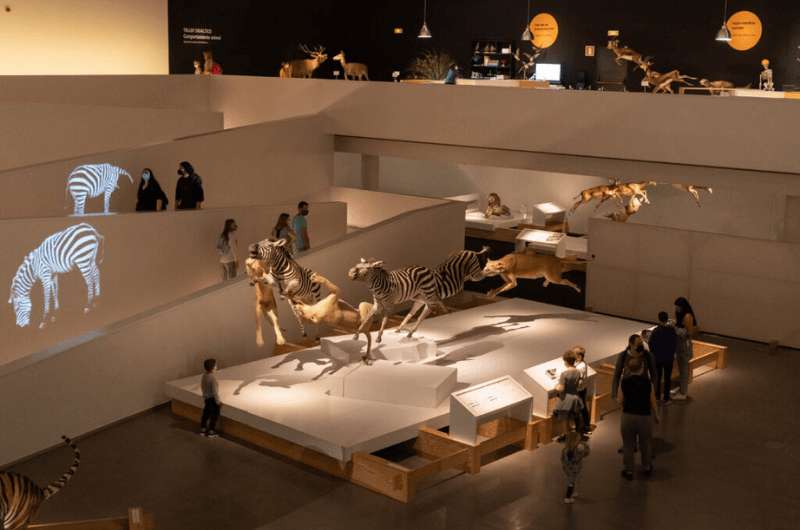
The WOW exhibit at Granada's Science Park
The Parque de las Ciencias is an interactive science center and museum dubbed “smart fun and educational entertainment”. It is the most visited museum in Andalusia with over 700,000 visitors a year. The best museum in Granada if you are at all interested in science.
Not surprisingly, there are exhibitions across all spheres of science: planets, animals, the human body, robotics, physics, etc. The exhibitions are interactive, fun, and playful. Even the taxidermy was enjoyable! There aren’t just stuffed animals standing in line, they are set up to show their movement, or how they would hunt for example.
The human body exhibit is a great one, though it has been known to be closed unexpectedly. Folks get pretty annoyed by that. Head over if you want to see body parts in jars.
Another great part are the exteriors. It’s a welcome opportunity to leave the building and get some fresh air. The BioDomo (ok, not technically outside) is a tropical dome where you can see and get really close to animals, fish and plants from far-away lands. Lemurs and some birds roam freely, so it’s pretty fun to see what they get up to.
The butterfly house is charming. The planetarium is apparently cool but only in Spanish when I checked. The observation tower is a good addition and gives the museum an extra dimension. And the cafe won’t get a Michelin star but gets the job done when you end up spending way more time at this Granada museum than you thought you would and need a snack.
Especially great for kids, but adults will enjoy themselves as well. I even saw teenagers having fun, which is the best compliment a museum can get.
It’s no problem to spend half a day at the Science Park. Granada itself doesn’t have a ton of tourist sites, the main one being the world famous Alhambra Palace, but the free tapas don’t hurt either. Read up on what else there is to see and do in Granada and try to gage how long to book your hotel for.
- Parque de las Ciencias,
- Closed Mondays. Tuesday to Sunday 10 am–7 pm.
- Tickets cost €11 for the museum and bio dome, the planetarium is €2.50 extra.
This post may contain affiliate links. We earn a small commission if you make bookings through my links, at no additional cost to you. This helps us keep this blog free, thank you!


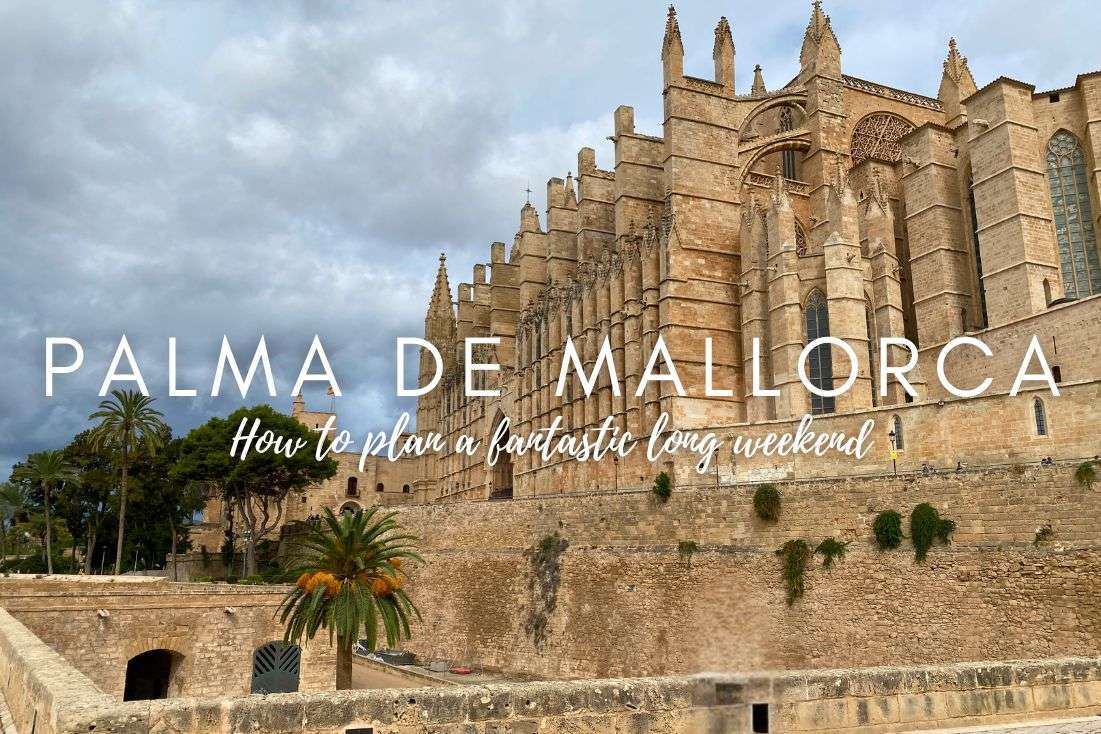
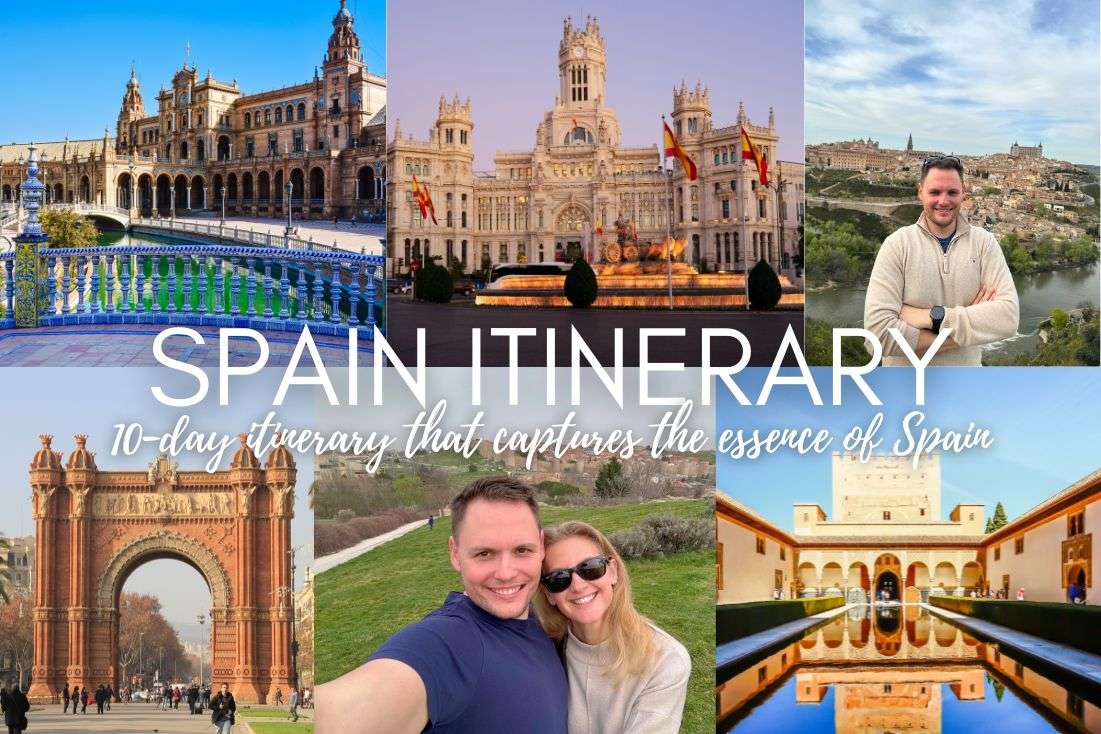
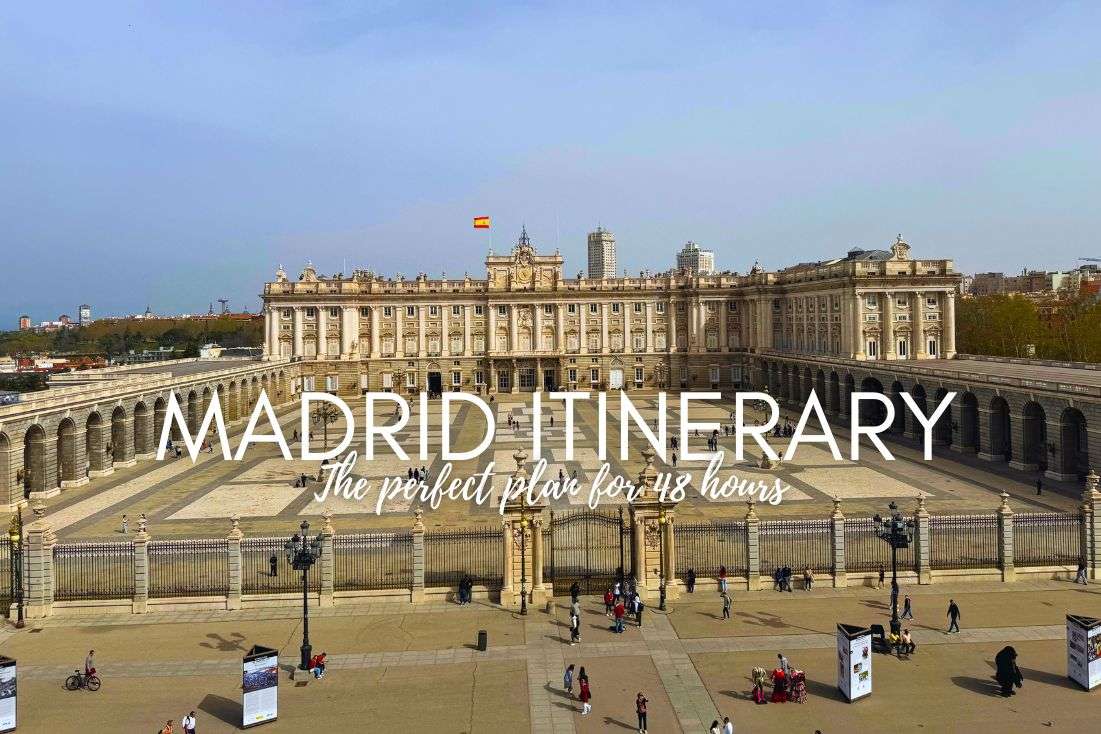





Comments | Thoughts? Give us a shout!